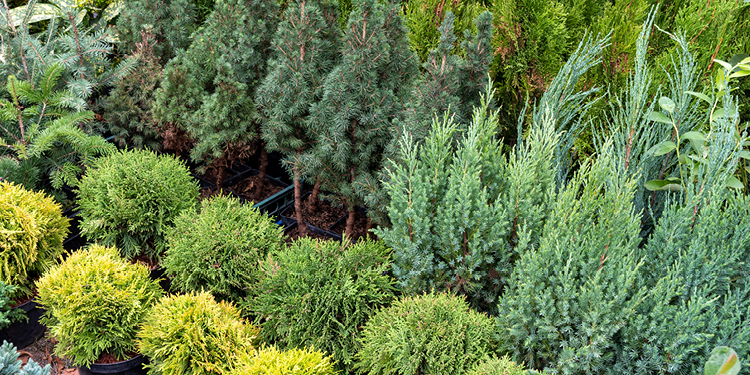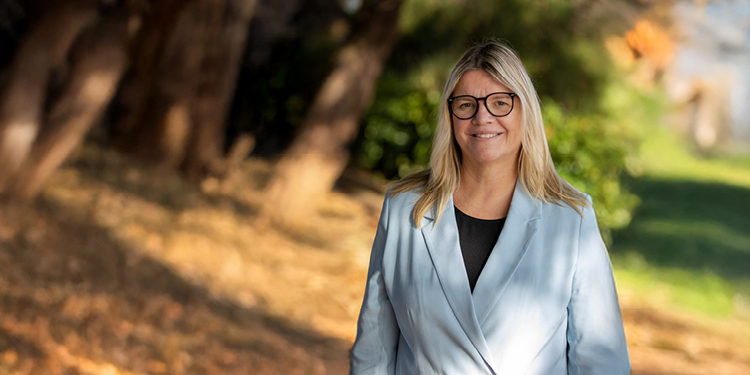How collaborating with Indigenous teachers inspires personal growth
January 6, 2025
For us, facilitating awareness about the cultures and histories of Indigenous Peoples is not only an honour, but a responsibility. We believe that our journey towards Reconciliation involves recognizing the Truth in the experiences of Indigenous Peoples. We can start to recognize the Truth by learning from Indigenous Elders, teachers and leaders. It’s one of the important ways we can begin to inspire personal growth and understanding on our paths towards Reconciliation.
Take a moment to learn about some of the inspiring experiences we’ve had collaborating with Indigenous teachers.
Workshopping with Indigenous teachers
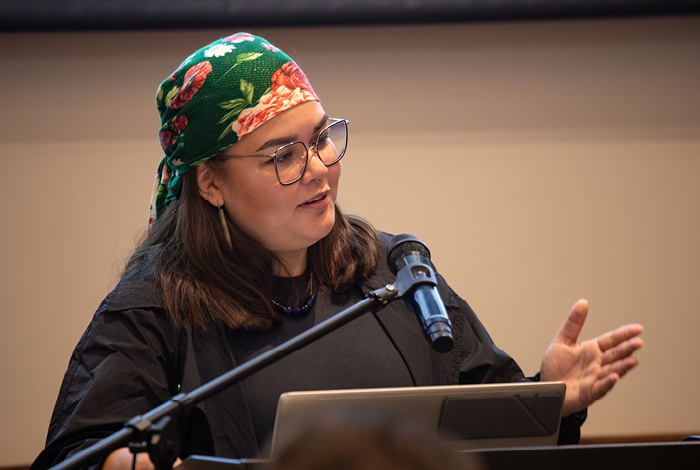
Kristen Bob, workshop coordinator at the Indian Residential School Survivors Society.
A special learning experience came when members of our major projects team attended a session on Indigenous histories and lived experience. The session was facilitated by Kristen Bob, a workshop coordinator at the Indian Residential School Survivors Society (IRSSS), and included deep dives into topics like colonialism, adversity and intergenerational trauma.
How exchanging cultures creates understanding
Kristen led a discussion on Canada’s colonial past. It’s a challenging and often neglected part of Canadian history; but, as Kristen told us, understanding the past is an important step towards Reconciliation. “Understanding true history, and being open, empathetic and understanding is a huge part of Reconciliation,” she said. “To me, intergenerational healing is understanding our history.”
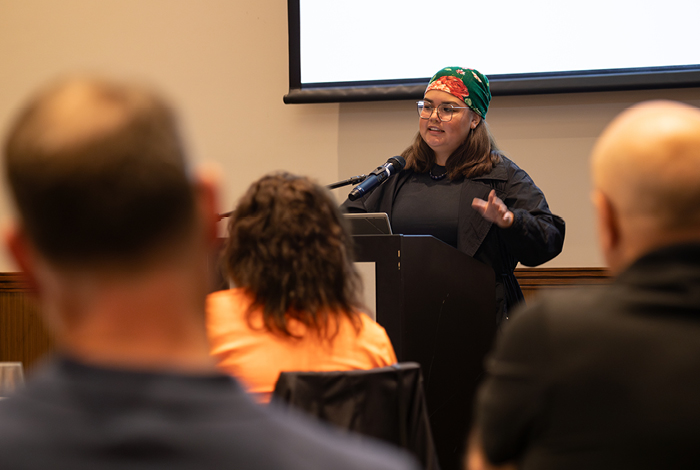
Kristen’s session was a powerful experience for many of our employees. Here are some of the topics that were discussed in her presentation:
- Indian residential schools – the extensive school system set up by the Canadian government and administered by churches.
- Indian day schools – a method of forced assimilation and cultural destruction used against Indigenous children after residential schools were fully mobilized.
- Reserve system – the government sanctioned displacement of Indigenous Peoples.
- The ‘60s Scoop – although the practice continued for decades, this term refers to the large number of Indigenous children who were taken from their homes (scooped) throughout the 1960s.
- Missing and Murdered Indigenous Women and Girls – the history of the comparatively high rate of missing and murdered Indigenous women, girls and Two-Spirit Peoples.
Kristen’s talk included many more examples from Canadian history that contextualize Indigenous experiences today, including the over-representation of Indigenous Peoples in the prison system, systematic racism and commercial, medical and police profiling. She told us that recognizing the Truth in the past is a necessary part of moving toward Reconciliation. With the Truth, however, comes responsibility. “Our trauma is not our fault, but it is our responsibility,” Kristen said. “Every day we have the opportunity to make choices for ourselves and our future generations. Intergenerational healing is allowing ourselves to heal from generations of lost identity, reclaiming parts of ourselves and breaking those cycles.”
It was an honour to learn with Kristen and the IRSSS. The IRSSS is a provincial organization that has been supporting Indigenous Peoples since 1994. If you’re interested in learning more about the cultures and histories of Indigenous Peoples, or if you need cultural or emotional support, we encourage you to explore the programs and services offered by the IRSSS.
Walking the land with Bert William
Another learning opportunity came when members of our team were fortunate enough to spend a day touring the ancestral homeland of the Secwépemc (Shuswap) Peoples.
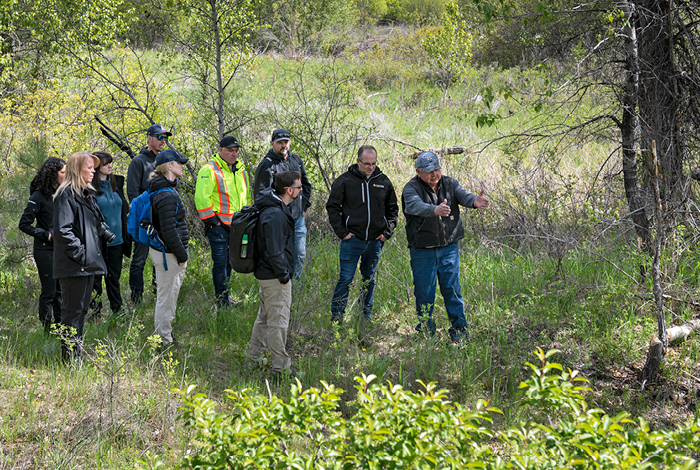
Bert William, senior archeological consultant for St'uxwtéws (Bonaparte First Nation), leading a session on the history of the Interior Plateau.
Led by Bert William, senior archeological consultant for St'uxwtéws (Bonaparte First Nation), our employees spent time visiting archaeological sites throughout the valley, like roasting pits and pit houses, as well as the Arrowstone quarry site.
Bert taught us that these sites were functional thousands of years ago during what is referred to as the Late Period (4000-200 years Before Present). In archaeology terms, Before Present is considered to be more than 200 years ago. In the large geographical region known as the Interior Plateau, Bert told us that the frequency of archeological cooking sites and shelters are evidence of the previously flourishing Secwépemc people. Now appearing only as elevated mounds of earth, the huge roasting pits, Bert explained, were used by the Indigenous Peoples of the Plateau to slow cook large quantities of roots. And the pit houses, we learned, were used by the first inhabitants of the valley as warm shelters during the harsh winters.
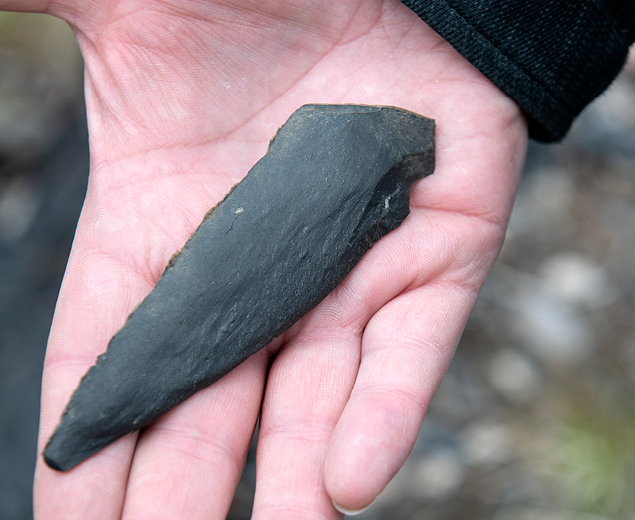
An example of a basalt stone tool.
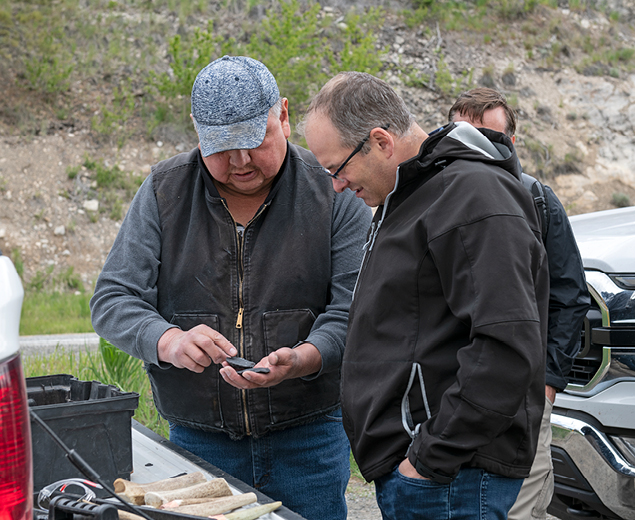
Bert William demonstrating the art of flint knapping.
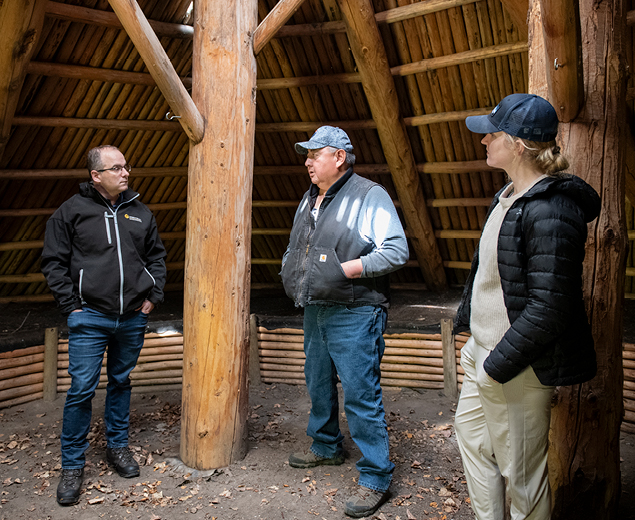
Doug Slater (left), vice-president, Indigenous relations and regulatory affairs, and Vanessa Connolly (right), director, community and Indigenous relations, listening to Bert William (centre) while standing in a modern replica of a pit house.
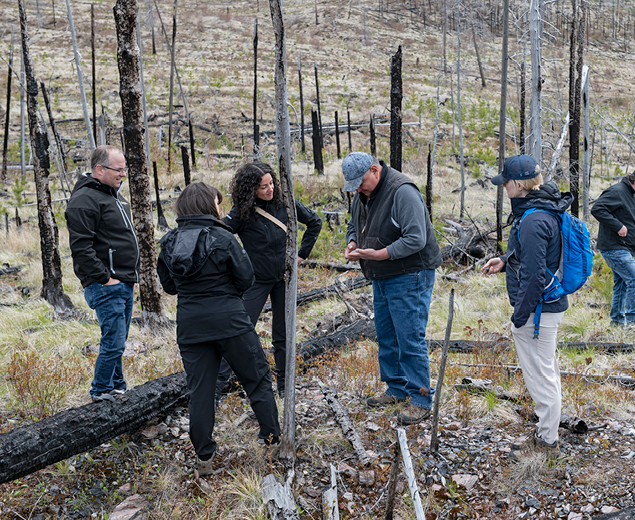
Members of our team exploring the land surrounding the basalt quarry.
Visiting the Arrowstone quarry site was equally exciting. Bert recorded the site while conducting an archaeological assessment of the land years earlier. The quarry was used by the ancestors of Secwépemc as a source of stone thousands of years ago. At the site, Bert demonstrated “flint knapping,” the art of shaping stone into sharp-edged tools. We also learned about “lithic scatter,” a term that describes the discarded stone flakes created during knapping.
How education protects the land
Bert has an amazing connection with the land. He’s spent decades contributing to the conservation of the environment surrounding St'uxwtéws, and he continues to educate visitors on the deep history of the region to this day.
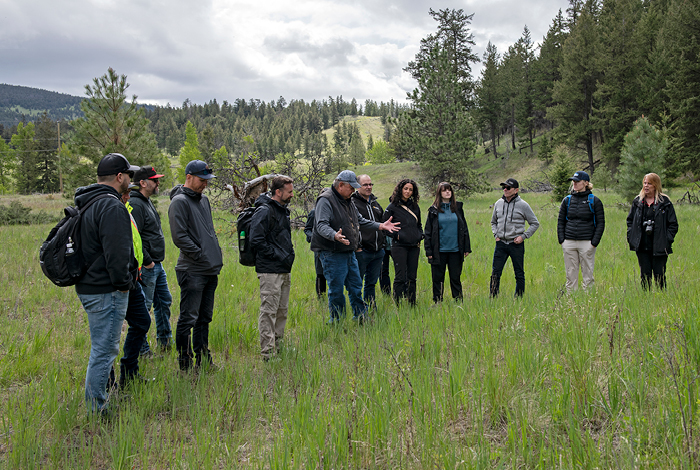
Bert worked for decades as an archaeological surveyor, walking the lands of his ancestors to investigate potential archaeological sites—a process called preliminary field reconnaissance. This career gave Bert the time to develop a special connection to the land, and it’s why he continues to educate people about the history of St'uxwtéws. Protecting the land through education is a priority for Bert because the more people who are aware of its history, the more people will care for it. “It’s why I’ve worked so long in archeology,” Bert said, “to help protect everything we could.”
The land produces everything—it’s reciprocal—it produces every aspect of life.
Bert William, St'uxwtéws (Bonaparte First Nation)
The journey toward Reconciliation takes many paths. We believe that learning from Indigenous teachers about their connection with the land is fundamental to understanding the Truth in the experiences of Indigenous Peoples. It was an honour for us to walk the land with Bert and learn more about his life, his Nation and his philosophy.
Indigenous Awareness Training
We’re actively engaging our employees in conversations and training sessions that create awareness about Indigenous histories, cultures and experiences—it’s a major part of being committed to the process of Reconciliation through Call to Action 92 from the Truth and Reconciliation Commission.
Since we embraced the Partnership Accreditation in Indigenous Relations (PAIR) program in 2020, a certification process through the Canadian Council for Indigenous Business, we’ve been progressing actions to encourage Indigenous awareness training at FortisBC. In 2024, we reached a significant milestone on our Reconciliation journey and earned a Silver Level Certification in PAIR. Canadian companies with Silver Level Certification in PAIR recognize the value of Indigenous perspectives and collaboration and can point to outcomes that have made a difference while working with Indigenous communities.
Our unique learning opportunities
With input from Indigenous community members and staff, we’ve successfully developed in-house Indigenous awareness training—an introduction to Indigenous histories that aims to build a better understanding of the experiences of Indigenous Peoples. The training reinforces the significance of Reconciliation, and it’s offered to all our employees.
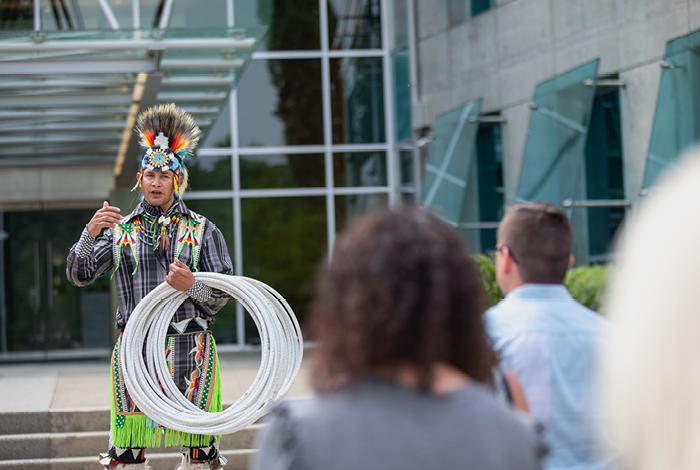
Alex Wells, Lil’wat Nation, performing hoop dancing during a celebration for National Indigenous Peoples Day at FortisBC’s Surrey Operations headquarters.
It’s important to note that the opportunities for learning about Indigenous perspectives go beyond creating awareness about the histories of Indigenous Peoples. We’re happy to say that we’ve expanded learning sessions for employees by creating ongoing training, which includes exciting opportunities like in-community training sessions and specialized discussions on Indigenous perspectives.
True Reconciliation is being able to incorporate a multitude of worldviews and perspectives into your space.
Sxwpilemaát Siyám (Chief Leanne Joe), Sḵwx̱wú7mesh Úxwumixw (Squamish Nation)
Tanya Laing Gahr, community and Indigenous initiative manager at FortisBC, is working with Indigenous leaders and educators to continually develop our Indigenous awareness training. We had the honour of speaking with Sxwpilemaát Siyám (Chief Leanne Joe) of Sḵwx̱wú7mesh Úxwumixw (Squamish Nation), who is reviewing the current training curriculum and offering guidance on the redesign. Chief Leanne Joe has years of experience developing educational material, and she often employs her philosophy of “learning and unlearning” in her review of training material. "Because Reconciliation is not separate to decolonization, you have to be able to unlearn concepts from colonization,” Chief Leanne told us. “If you can’t do that, you won’t be able to accept other worldviews into your space.”
Continuing to learn where we live and work
As we strive to serve communities across our province, it’s crucial that we acknowledge the history of the land and the cultures of Indigenous Peoples. By continuing to learn, we’ll be able to understand the connection between Indigenous communities, their cultures and their Traditional Territories.
Learning about Indigenous perspectives is a necessary part of our journey toward Reconciliation. Find out more about how we create long-lasting relationships with Indigenous communities.

